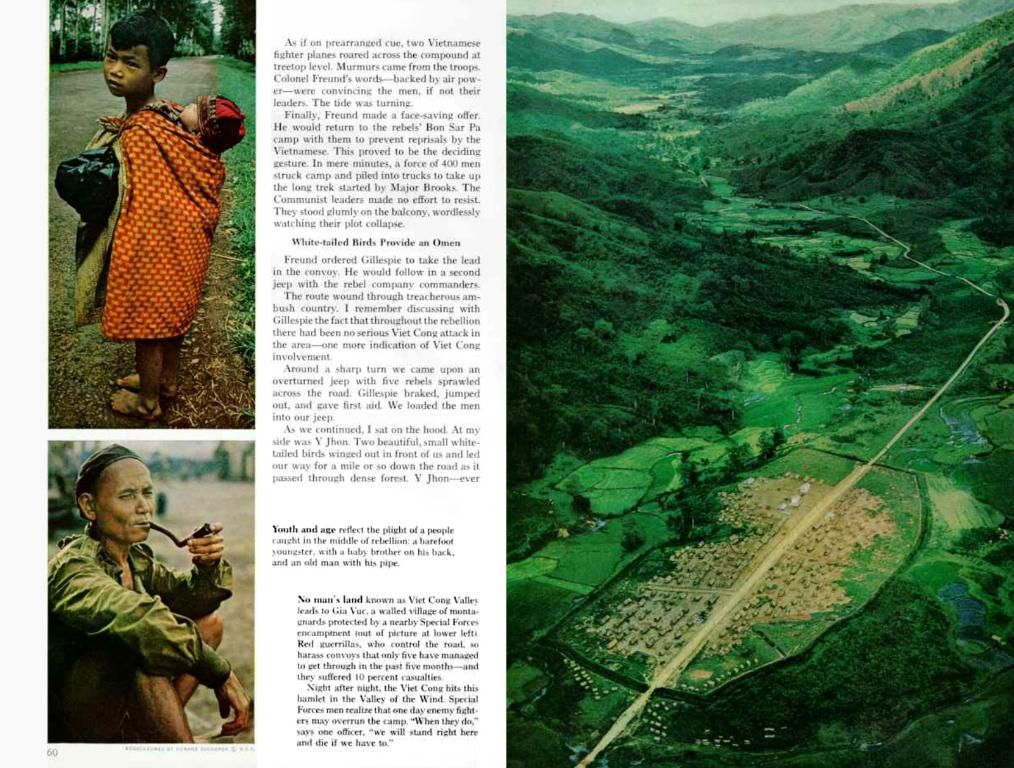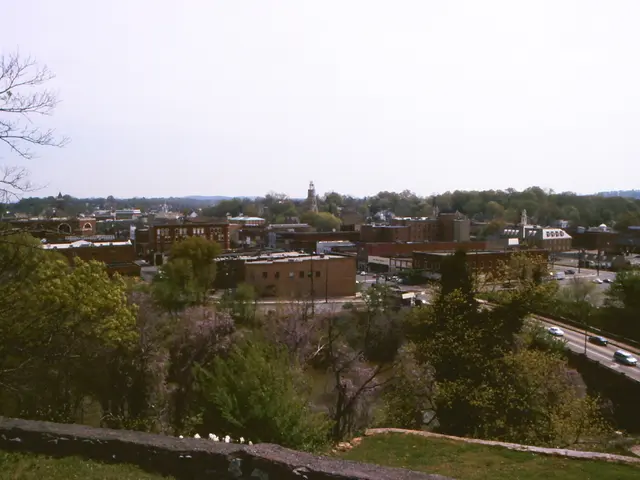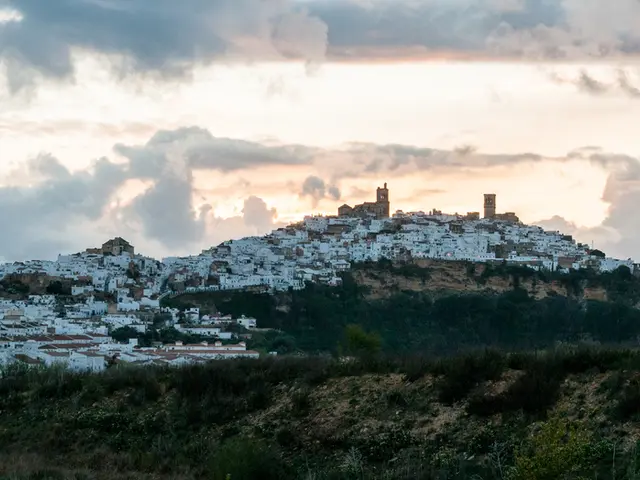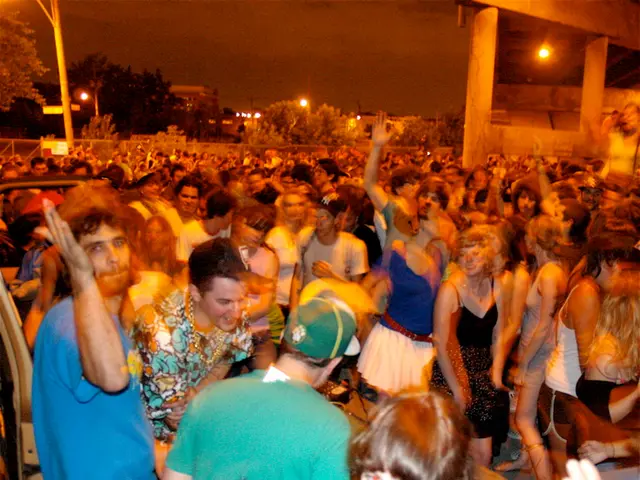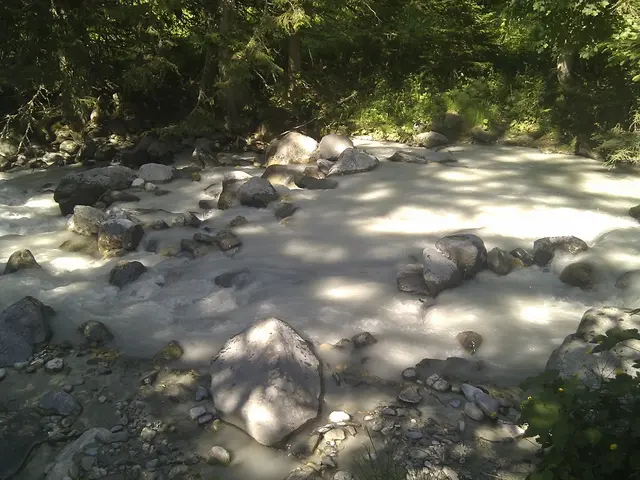City Planner Carlo Ratti Outlines Concept of Blending Natural and Artificial Urban Spaces
Flipping the Script on Cities:
Professor Carlo Ratti is all about merging technology and greenery to create modern marvels, pushing the boundaries of innovation in urban design at a breakneck pace. He spills the beans on why data is the key to blending nature-based design, why we gotta keep a wary eye on smartphones, and how to put citizens at the forefront of innovation.
Ratti's got a passion for cities -- they're where people unite to live, collaborate, and form communities. When asked about being called influential, he shrugs it off as fiction. He'd rather talk about his lifelong love for design and bridging the gap between nature and artificial worlds -- innovation is the engine. He sums it up: "Doing old things in a new way or doing new things."
But what the heck does Ratti mean by "artificial" in this context?
Navigating the Labyrinth of the Artificial
Ratti's fond of quoting Herbert Simon and his book 'The Sciences of the Artificial'. He uses "artificial" as a shorthand for humanity's creations. It's more intricate, he adds. Governing architectural designs can lead cities in positive or negative directions. For instance, he cites how the 20th-century metropolis was often designed as a hostile haven from nature.
Designers and city planners often preferred towns that sprawled, an approach that presented challenges.
"Buildings or even entire neighborhoods became spaceships, landing in the middle of nowhere. Cities were expanding, devouring the green space around them and destroying green belts in their path. Now, the challenge is reversed: how can we bring green back into the city?"
In other words, the city of tomorrow, according to Ratti, would boast characteristics resembling a natural system, including the ability to adapt to our demands dynamically. Integrating natural and artificial elements creates more functional, livable cities. Tackling the challenge of reconciling the synthetic and the organic is one of urban areas' biggest hurdles.
Tapping Nature's Secrets
One way to weave nature into buildings lies in support plants and various growing techniques (hydroponics, aeroponics) as a foundation for infrastructure.
Ratti has crazier ideas. Like a project for the "Urban Future 2022", offering a sneak peek into his method of bringing opposing forces together.
Hot Heart, created by CRA-Carlo Ratti Associati, won the "Helsinki Energy Challenge". It draws heat from renewable sources when costs are low and stores it in water tanks that mimic "floating islands" in the Baltic Sea near Finland's capital coastline. In winter, the heat is withdrawn and injected into the district heating system, acting like a giant battery and the basis for an affordable, resilient heat source.
Leveraging the Digital World
One key ingredient in Ratti's utopian visions is data. As an architect and engineer by training, it's no shock that he sees data as a valuable resource.
Data paints a clear picture of what's working and what isn't. It unveils demographics, resource management, people's needs and movements, segregation, traffic flows and bottlenecks, and service provision. It helps gauge the impact of projects and innovations.
As Ildefons Cerdá, "the father of modern Barcelona," foresaw centuries ago, Cerdá predicted that data would eventually turn city sciences into a reality. Ratti acknowledges this prophecy has come true thanks to the internet, considered "the most incredible invention of the previous century."
Smart about Sensors
This era is teeming with sensors collecting real-time data that artificial intelligence processes. This data fuels Ratti's designs, but he remains cautious regarding this flood of information.
He raises concerns over the countless data pieces phones collect about our physical activities and digital footprints.
"Each phone has an accelerometer that detects if I'm walking, cycling, taking the bus, or the car. This data is harvested. Shared. We don't know exactly where. That's a bit unsettling."
Figuring out how to handle our data is a topic Ratti's team at the Massachusetts Institute of Technology (MIT) tackles. They organize conferences called "Engaging Data" to bring together privacy advocates, tech giants, and scholars to debate info management. Better managing and using data, Ratti believes, empowers both policymakers and citizens by integrating them into the city's feedback loop. It gives them a voice.
Designers, according to Ratti's philosophy, reside on the border between digital data and human power: "I like to think of designers as catalysts." By involving citizens, they decide on their city's future direction. "Let them be more active in proposing new urban transformation."
That's important because the choices we make today will echo for generations tomorrow.
Ratti doesn't operate solo. He mobilizes around 10,000 innovators via three channels:
- As a professor at MIT's Department of Urban Studies and Planning.
- Leading MIT's research institute, the Senseable City Lab.
- At CRA-Carlo Ratti Associati, his international design and innovation practice in Turin and New York, which turns research into real-world projects.
These hotbeds of imagination often spawn start-ups testing new ideas. This melting pot of professionals fosters collaboration.
"The essential aspect is bringing together different disciplines and various skills. Architects, planners, folks from big data, science, physics, mathematics, and social science experts come together to better understand the urban jungle's complexity."
Despite being multidisciplinary, they might attribute distinct meanings to a term. It's crucial to clarify definitions to speed up progress.
"The starting point is establishing a common vocabulary."
Adapting to the Audience
The second essential aspect is communications. This creates influence.
Ratti shares examples of the various metrics familiar to various disciplines to gain exposure for their work. This broadens discussions and generates feedback for new ideas.
"Urban development is a continuous journey of trial and error. Some will quell, others thrive."
The Crew Selection
This venture calls for a unique type of individual, Ratti suggests. He's built a "collaborative admission process" to find the perfect candidates.
Ratti assembles a selection committee for each project. Through interviews, they identify people whose perspectives align, and who are willing to collaborate with other disciplines.
Top performers might not be chosen because their goals don't align with those of the group: "They yearn to become the best in their field. What we seek is people ready to venture out into other disciplines." Teamwork is the secret sauce.
- Ratti's approach to urban design leverages data and technology to blend nature-based design with artificial elements, akin to merging 'lifestyle' with 'sustainable living'.
- In Ratti's vision, smartphone data raises privacy concerns as it gathers details about our 'personal-growth' and movements, which can be sensitive 'education-and-self-development' information.
- Ratti's team at MIT focuses on managing data and its usage, advocating for policies that empower 'citizens' by integrating them into the city's feedback loop, promoting 'learning' and active participation in urban transformation.
- Ratti's collaboration with different disciplines and professionals seeks to understand and address the complexity of urban areas, striving towards the creation of functional, livable cities that seamlessly integrate 'home-and-garden' elements with 'data-and-cloud-computing' technologies.
